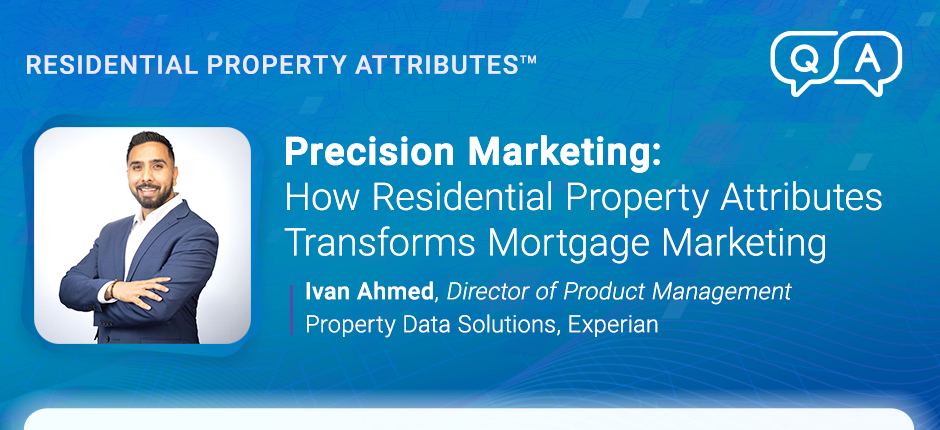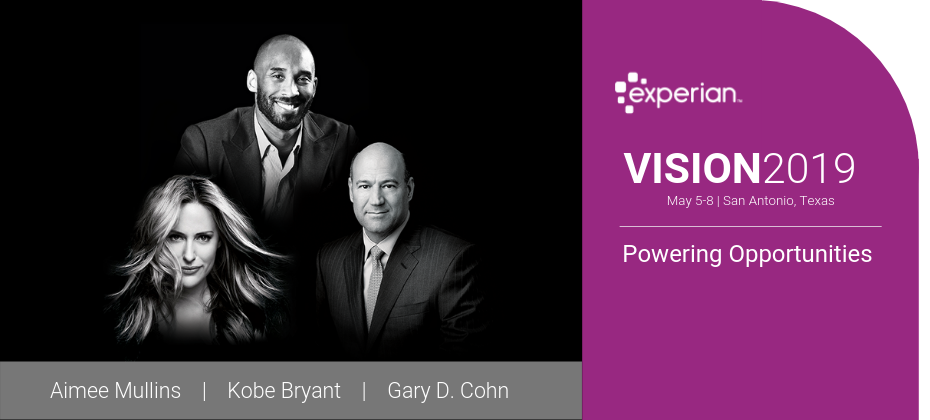Tag: mortgage trends

Current economic conditions present genuine challenges for mortgage lenders. In this environment, first-time homebuyers offer exciting, perhaps unexpected, business growth potential. Market uncertainties have kept potential borrowers anxious and on the sidelines. The Federal Reserve's recent announcement that interest rates will remain steady for now has added to borrower anxiety. First-time homebuyers are no exception. They are concerned about the “right” time to jump in, buy a home, and own a mortgage. Despite worries over high interest rates and low inventory, many first-time homebuyers are tired of waiting for rates to drop and inventory to blossom. First-time buyers are eager to explore all avenues necessary to achieve homeownership. They show a willingness to be flexible when it comes to finding a house, considering options like a fixer upper or expanding their search to more affordable locations. The desire to escape the uncertainty and financial burden of renting is a strong driving force for first-time buyers. They see homeownership as a way to establish stability and build equity for their future. Despite the obstacles renters face in the competitive housing market, these potential buyers are motivated. Lenders who take time to understand who these buyers are and what matters to them will be ahead of the game. Notwithstanding stubbornly high interest rates, first-time homebuyers historically have shown remarkable resilience amid market fluctuations. According to a recent deep dive by Experian Mortgage experts into the buying patterns of first-time homebuyers, this group made 35-48% of all new purchases and 8-12% of all refinances between July 2022 and September 2023. First-time buyers represent both immediate potential and long-term client opportunities. How can lenders attract first-time homebuyers and drive growth from this market? The first-time homebuyer market largely consists of individuals in their early 40s and younger, also known as Gen Y and Gen Z. Rising costs of renting a home frustrate these individuals who are trying to save money for a down payment on a house and ultimately, buy their dream home. They want to settle down and look ahead to the future. For mortgage lenders who focus on understanding this younger first-time buyer market and developing targeted business strategies to attract them, great growth potential exists. Often, younger people feel locked out of buying opportunities, which creates uncertainty and apprehension about entering the market. This presents mortgage industry professionals with an incredible opportunity to show their value and grow their client base. To attract this market segment, lenders must adapt. Lenders must develop a comprehensive picture of this younger generation. Who are they? How do they shop? Where do they want to live? What is their financial situation? What are their financial and personal goals? Acknowledging difficulties in the housing market and showing them a well-conceived path forward to home ownership will win the day for the lender and the buyer. As interest rates are poised to decrease in 2024-2025, there is potential for a surge in demand from first-time homebuyers. Lenders should prepare for these potential buyers, now. It is crucial to reevaluate how to approach first-time buyers to identify new opportunities for expansion. Experian Mortgage examined first-time homebuyer trends to pinpoint prospects with good credit and provide analysis on potential areas of opportunity. For more information about the lending possibilities for first-time homebuyers, download our white paper. Download white paper

In an era where record-breaking home prices and skyrocketing interest rates define the mortgage landscape, borrowers find themselves sidelined by prohibitive costs. With the purchase market at a standstill, mortgage lenders are grappling with how to sustain and grow their businesses. Navigating these turbulent waters requires innovative solutions that address the current market dynamics and pave the way for a more resilient and adaptive future. Today, I’m sitting down with Ivan Ahmed, Director of Product Management for Experian’s Property Data solutions, to learn more about Experian’s Residential Property Attributes™, a new and exciting dataset that can significantly enhance mortgage marketing and mortgage lead generation strategies and drive business growth for lenders, particularly during these challenging times. Question 1: Ivan, can you provide a brief overview of Residential Property Attributes and its relevance in today’s mortgage lending landscape? Answer 1: Absolutely. Residential Property Attributes is our latest product innovation designed to revolutionize how mortgage lenders approach marketing and growth decisions. It’s a robust dataset containing nearly 300 attributes that seamlessly integrates borrower property and tradeline information, providing a more holistic view of a borrower’s financial situation. This powerful dataset empowers lenders to make well-informed, impactful marketing decisions by refining campaign segmentation and targeting. Our attributes group into five categories: Question 2: As a data-focused company, we frequently discuss the importance of leveraging data and analytics to enhance marketing performance with clients. Considering other data providers that offer property data analytics or credit behavior data, what makes our capabilities distinct? Answer 2: The defining feature of Residential Property Attributes is its integration with borrower tradeline data. Many lenders today focus primarily on credit behavior, but we consider property data analytics, a critical aspect, equally important. By merging these two components, we present lenders with a thorough and accurate understanding of their target borrowers. This combination is revolutionary for marketing leaders looking to boost campaign performance and return on investment (ROI). Consider this scenario: On paper, two borrowers may seem homogenous, with similar credit scores, payment histories, and debt-to-income ratios. However, when you incorporate property-level insights, a striking disparity in their overall financial situations emerges. This level of insight prevents possible misdirection in marketing efforts. Question 3: Could you share more about the practical benefits of Residential Property Attributes, especially regarding enhancing marketing performance? Answer 3: Residential Property Attributes is instrumental in amplifying performance. It enables precise audience segmentation, allowing lenders to tailor marketing campaigns to address specific borrower needs. Here are a few examples: Lenders can identify borrowers with over $100k in tappable equity and high-interest personal loans and credit card debt. These borrowers are ideal for a cash-out refinance campaign aimed at debt consolidation. They can use a similar approach for Home Equity Line of Credit (HELOC) or Reverse Mortgage campaigns. Another instance is the utilization of property listings data. This identifies borrowers who are actively selling their properties and may need a new mortgage loan. This insight, coupled with credit-based 'in the market' propensity scores, enables lenders to pinpoint highly motivated borrowers. Such personalization improves engagement and enhances the borrower experience. The result is a marketing campaign that resonates with the audience, thus yielding higher response rates and conversions. The integrated view provided by Residential Property Attributes is the secret ingredient enabling lenders to maximize ROI by optimizing their marketing journey at every step. Taking action As we traverse today's complex mortgage landscape, it's clear that conventional methods fall short. As we face unprecedented challenges, adopting a holistic view of borrowers via Residential Property Attributes is not an option but a necessity. It's more than a tool; it's a compass guiding lenders towards more informed, resilient, and successful futures in the ever-changing world of mortgage lending. Learn more about Residential Property Attributes

In financial crime, fraudsters are always looking for new avenues to exploit. The mortgage industry has traditionally been a primary target for fraudsters. But with the 30-year fixed-mortgage rate average above 7.19% for the month of September, it has caused an inherent slowdown in the volume of home purchases. As a result, criminals are turning to other lucrative opportunities in mortgage transactions. They have evolved their techniques to capitalize on unsuspecting homeowners and lenders by shifting their focus from home purchases to Home Equity Line of Credit (HELOC), as they see it as a more compelling option. Understanding mortgage fraud Mortgage fraud occurs when individuals or groups intentionally misrepresent information during the mortgage application process for personal gain. The most common forms of mortgage fraud include income misrepresentation, false identity, property flipping schemes, and inflated property appraisals. Over the years, financial institutions and regulatory bodies have implemented robust measures to combat such fraudulent activities. As the mortgage industry adapts to counter established forms of fraud, perpetrators are constantly seeking new opportunities to circumvent detection. This has led to a shift in fraud trends, with fraudsters turning their focus to alternative aspects of the mortgage market. One area that has captured recent attention is HELOC fraud, also known as home equity loan fraud. HELOC fraud: An attractive target for fraudsters What is a HELOC? HELOCs are financial products that allow homeowners to borrow against the equity in their homes, often providing flexible access to funds. While HELOCs can be a valuable financial tool for homeowners, they also present an attractive opportunity for fraudsters due to their unique characteristics. HELOC fraud schemes An example of a home equity loan fraud scheme is a fraudster misrepresenting himself to deceive a credit union call center employee into changing a member’s address and phone number. Three days later, the fraudster calls back to reset the member’s online banking password, allowing the fraudster to login to the member’s account. Once logged in, the fraudster orders share drafts to be delivered to the new address they now control. The fraudster then forges three share drafts totaling $309,000 and funds them through unauthorized advances against the member’s HELOC through online banking platforms. Why HELOCs are becoming the next target for mortgage fraud Rising popularity: HELOCs have gained significant popularity in recent years, enticing fraudsters seeking out opportunities with larger potential payouts. Vulnerabilities in verification: The verification process for HELOCs might be less rigorous than traditional mortgages. Fraudsters could exploit these vulnerabilities to manipulate property valuations, income statements, or other critical information. Lack of awareness: Unlike conventional mortgages, there may be a lack of awareness among homeowners and lenders regarding the specific risks associated with HELOCs. This knowledge gap can make it easier for fraudsters to perpetrate their schemes undetected. Home equity loans do not have the same arduous process that traditional first mortgages do. These loans do not require title insurance, have less arduous underwriting processes, and do not always require the applicant to be physically present at a closing table to gain access to cash. The result is that those looking to defraud banks can apply for multiple HELOC loans simultaneously while escaping detection. Prevention and safeguards There are several preventive measures and fraud prevention solutions that can be established to help mitigate the risks associated with HELOCs. These include: Education and awareness: Homeowners and lenders must stay informed about the evolving landscape of mortgage fraud, including the specific risks posed by HELOCs. Awareness campaigns and educational materials can play a significant role in spreading knowledge and promoting caution. Enhanced verification protocols: Lenders should implement advanced verification processes and leverage data analytics and modeling thorough property appraisals, income verification, and rigorous background checks. Proper due diligence can significantly reduce the chances of falling victim to HELOC-related fraud. Collaboration and information sharing: Collaboration between financial institutions, regulators, and law enforcement agencies is essential to combat mortgage fraud effectively. Sharing information, best practices, and intelligence can help identify emerging fraud trends and deploy appropriate countermeasures. Acting with the right solution Mortgage fraud is a constant threat that demands ongoing vigilance and adaptability. As fraudsters evolve their tactics, the mortgage industry must stay one step ahead to safeguard homeowners and lenders alike. With concerns over HELOC-related fraud rising, it is vital to raise awareness, strengthen preventive measures, and foster collaboration to protect the integrity of the mortgage market. By staying informed and implementing robust safeguards, we can collectively combat and prevent mortgage fraud from disrupting the financial security of individuals and the industry. Experian mortgage is powering advanced capabilities across the mortgage lifecycle by gaining market intelligence, enhancing customer experience to remove friction and tapping into industry leading data sources to gain a complete view of borrower behavior. To learn more about our HELOC fraud prevention solutions, visit us online or request a call. *This article leverages/includes content created by an AI language model and is intended to provide general information.

High property values and rising interest rates have priced many borrowers out of the market. In the face of declining home purchases, lenders are focusing on their portfolios and opportunities to expand borrower relationships. At the same time, portfolio health is increasingly important. Keeping a pulse on and successfully managing portfolio risk is just as important as portfolio growth. To effectively manage a mortgage portfolio, an understanding of the complete financial standing of a borrower, along with the most recent loan performance and property data characteristics, is crucial. Below we discuss three ways to analyze your portfolio to maximize performance. Portfolio risk While mortgage delinquencies remain well below pre-pandemic levels, rolling delinquency rates are seeing an uptick. In a recent study, we found that, of the at-risk population, over 24% may be at high risk of delinquency or default. Having the tools and resources to segment your portfolio and identify these borrowers is key to preemptively assisting or modifying loan terms and reducing risk exposure to the business. Growth and retention Did you know up to 64% of prime and above borrows may be ideal Home Equity Line of Credit (HELOC) candidates? Having the ability to segment your portfolio to identify borrowers who can tap into their home equity as a line of credit for upgrades, remodeling, or simply a rainy-day fund, will allow you to grow your originations pipeline while also supporting your mortgage retention strategy. To optimize your segmentation strategy, consider leveraging In the Market Models (ITMM) to identify borrowers with a high propensity to respond to HELOC offers. Through a retrospective analysis, we found that ITMM can improve campaign performance by over 700%. Similarly, a HELOC can be a prime option for borrowers with increasing debt. Through our newly launched solution, Mortgage Insights Dashboard for Servicing, we found that up to 46% of prime and above borrowers may be ideal candidates for debt consolidation. For this segment of your portfolio, a HELOC can consolidate high-interest debt from credit cards, retail cards, or even short-term loans. Peer analysis Like sports teams, many mortgage lenders and servicers are interested in comparing their performance against that of their peers. Are your portfolio runoff rates above, equal to, or below that of your competitors? In some instances, we’ve seen a lender’s runoff rate averaging 10% MoM higher than their peers. By comparing your portfolio performance against your peers (and the market) you can assess both the efficacy of portfolio recapture strategies and demonstrate loan quality to investors. While these are just a few examples of ways to analyze your portfolio, perhaps what’s most important is having the data, such as credit, income, DTI, and property information, needed for this type of intelligence available in one place. Partner with a provider that can offer you the mortgage servicing solutions to easily segment your portfolio to gain insights and inform ongoing strategic decisions. Learn more *Data charts source: Experian's Mortgage Insights Dashboard for Servicing

In recent blog posts, we’ve discussed growing in a down market and getting ahead with a proactive outreach and engagement strategy. In this article, we’ll focus on audience segmentation and multichannel marketing. As the market has shifted, effective cost management is a top priority. Lenders who get the most bang for their buck tend to use data to create their audience, segment and message. Best practice #1: audience segmentation It’s hard to beat the combination of credit and property data for mortgage lenders. Obtaining a holistic consumer view and property details (if they’re a homeowner), can help lenders determine the best mortgage product and refine their messaging. Many of our partners have great success leveraging a combination of property and credit insights to identify consumers for a home equity line of credit (HELOC) or new first mortgages. Let’s look at HELOC as an example. From a process perspective, we use property data to identify borrowers with properties that qualify for the lender’s HELOC program – sufficient equity, owner occupied, no tax liens, not listed for sale, a value below their upper lending bound, etc. Once the initial population is identified, we further segment their target population by adding key credit insights, such as current score and outstanding unsecured debt. This allows the lender to identify borrowers who qualify for their HELOC program and do specific outreach for either debt consolidation or remodel. By performing the equity and credit analytics with a single vendor, the lender can increase their speed to market. The results? Lenders succeed by quickly reaching the right borrowers, with the right offer and message. Additionally, they don’t waste money on or disappoint applicants who don’t meet their program guidelines. Best practice #2: refining the message The next best practice I’d like to focus on is refining the message with relevant demographic and consumer behavior data. Experian studied the differences among consumers who recently purchased a home, those who recently secured a HELOC, and the general consumer population. Look at these four categories from our Mosaic Group and consider how you would adjust your messaging if you really know your prospect? Might you incorporate different imaging for a Power Elite homeowner in your HELOC campaign than a Flourishing Family to whom you are marketing a first mortgage? Or consider how different decision-making styles would impact the information you highlight in your outreach? Look at the difference between HELOC borrowers and first mortgage borrowers in terms of their decision-making style. Different messaging will appeal to a consumer who is a brand loyalist versus someone who is a savvy researcher. Best practice #3: omnichannel marketing strategy Finally, let’s focus on how best to reach the consumer. Not only is it important to meet consumers on their preferred channel, but a best practice is to execute an omnichannel strategy. We increasingly see lenders using emails in prescreen campaigns with invitations to apply, or ITAs, across multiple communication channels. Look at the overall research for email, text, and direct mail. Increasingly, savvy marketers are asking us for emails in their prescreen campaigns, and it’s no surprise. Based on the research, a tailored email campaign can be very effective. Perhaps most surprising is the level of mortgage borrower engagement in streaming TV! This is just the tip of the iceberg in terms of how data can be sliced and diced to drive your omnichannel engagement strategy. In short, when executing a mortgage marketing campaign, it’s important to leverage available data for audience segmentation. Once your audience is identified, you’ll want to refine your message to resonate with each segment. Lastly, instituting a multichannel marketing strategy is key to ensuring you’re getting in front of your audience in the channel they’re most likely to engage. By adopting these best practices, you’ll reach the right borrower, with the right message, in the right channel, which, in-turn, will help boost the ROI of your marketing program. To learn about Experian Mortgage solution offerings, click here. Learn more

Driving growth in a down mortgage market can be tricky. It’s a mad scramble to obtain quality mortgage leads that convert into profitable loans. At Experian Mortgage, we have a front row seat into the efficacy of different lead generation strategies, and what we know for certain, is that data matters in both the audience creation and outreach approach. I’ve compiled several best practices for identifying qualified prospects early in the homebuying journey and using analytics to focus your outreach on those most likely to convert. Best practice #1: credit-based triggers First, let’s focus on borrower-behavior triggers, as they’re key for getting ahead of the competition. I occasionally hear skepticism about tried-and-true credit-based prospect triggers, but many find them indispensable. Credit triggers alert you when borrowers apply for credit and when other indicators meet your specific lending criteria, including credit scores, score trends, credit limits, utilization and much more. They’re effective – and not just for big lenders. Our clients leverage credit-based triggers to quickly pursue “hot leads,” and have reported higher response rates, lower acquisition costs and revenue growth. Best practice #2: property listing triggers Another borrower behavior to watch is listing a property for sale, which can be done using property listing triggers. You can use listing triggers to monitor current customers – and with Experian, you can prospect for new customers outside your portfolio. One of our clients instituted property listing triggers and immediately identified 40,000 homeowners in their footprint who had recently listed a property for sale. Experian research shows that a homeowner lists their property for sale, on average, 35 days before applying for a new mortgage. This means this lender had over a month to reach those consumers with a tailored message. Now that’s getting a jump on the competition! But what about those homeowners who list a property for sale but don’t move? We hear anecdotally about more homeowners putting their homes on the market to see what offers they can get. According to recent data, a higher percentage of listings fail to sell today than last year. While property listing remains one of the most predictive behaviors for purchase, there’s room to optimize. Whether your prospect came to you via a property or credit trigger, there’s an opportunity to improve your ROI by identifying trigger leads most likely to convert. Best practice #3: in-the-market models A key best practice in audience segmentation is to incorporate in-the-market models (ITMM). A good model is based on sophisticated analytics across hundreds of data elements and millions of loan applications. Additionally, a good model is tailored to your product. A consumer in the market to buy their first house will “look” very different than a consumer in the market for a Home Equity Line of Credit (HELOC). Experian clients are doing two impactful things with ITMM. First, they create their audience list by bundling ITMM with credit, income, and property data to identify qualified consumers likely to be in the market soon. Second, they optimize an existing marketing list. However, when it comes to a mortgage lead generation program, you can only optimize what you measure. Experian has been helping clients by analyzing their lost leads and lost loans. Several clients recently asked us to analyze their efficacy with marketing lists originating from digital mortgage lead aggregators (i.e., lists of consumers who sought information online about mortgages). I’ll focus here on the leads who did NOT originate a mortgage with our clients, but DID open a tradeline with someone else. My first observation is that prospects who opened a tradeline were significantly more likely to open a credit card than a mortgage. My second observation is when the prospect opened a mortgage loan with a different institution, 80% of the time that lender was a non-bank. This is higher than the current non-bank share of the market, which indicates non-banks are aggressive with their leads and poised to grow their share. Here’s where ITMM comes into play. By incorporating an ITMM specifically for your product – HELOC, purchase, refinance – you can focus attention on borrowers most likely to open a mortgage. In summary, instituting credit and property triggers is a critical best practice and will open the door to a plethora of prospects. If you want to level up your marketing strategy, incorporating an ITMM is key and will help you segment the trigger leads and home in on those that are most likely to convert. Be sure to check out the final blog post in this series, Lead Conversion Through Tailored Messaging and a Multichannel Mortgage Marketing Strategy. To learn about Experian Mortgage solution offerings, click here. Learn more

Mortgage lenders are no stranger to income and employment verification. Leveraging a third-party solution provider for automated verifications is a standard practice in mortgage underwriting. Yet many lenders still struggle with time-consuming and complex verification experiences, which can be manual, inefficient and painful for borrowers. Since introducing Experian Verify™ to the market, we’ve had countless conversations with key players in the industry – from the largest banks to small independent mortgage brokers and everything in between. Through these conversations, we’ve learned quite a bit about some of the dos and don’ts when it comes to implementing a successful strategy for income and employment verification for mortgage. Lead with instant verification Digital transformation has forever changed borrower expectations for online experiences. The first key to a successful verification strategy is starting your workflow with an instant verification solution. This allows you to verify information in real time, delivering a completely frictionless experience for you and your borrowers. Consider building a waterfall process For instances when a borrower’s income and employment information is unable to be verified through an instant verification solution, add a consumer-permissioned (bank or payroll) option as a backup. Cascading from one digital solution to the next will ensure you can verify borrower information in seconds or minutes, as opposed to days or weeks. The goal is to prevent as many borrowers as possible from going through a costly manual process. Tap into unique data sources Many verification solutions in market today tap into the same data sources, which can make it difficult to differentiate between solutions and measure additive benefits. When evaluating options, look for verification solutions that leverage unique and exclusive data sources – allowing you to optimize hit rates and maximize value. Avoid a “one-size-fits-all” approach There is no silver bullet. Every market is unique and every lender has different needs. Your verification requirements are likely specific to your business, which means you need to leverage verification solutions that offer flexible options and enable you to build a verification experience that works best for you and your borrowers. Find a solution provider who’s all in It’s important to find a solution provider where income and employment verification isn’t just a “side hustle,” but is core to their business strategy. Find a provider who is fully committed – delivering new innovations, investing in key partnerships, maximizing accessibility through leading LOS / POS technology providers, and offers eligibility for key industry programs, such as Day 1 Certainty® from Fannie Mae. Challenge the status quo Many lenders have an existing relationship with a third-party solution provider. But it’s important not to put all your eggs in one basket. If your existing provider is not meeting all your needs, challenge the status quo. Consider adding a second provider to the top of your waterfall to help contain costs and tap into unique data that is not available from your existing provider. Ready for further insight? Learn more about income and employment verification for mortgage.

There are many facets to promoting a more equitable society. One major driver is financial inclusion or reducing the racial wealth gap for underserved communities. No other tool has impacted generational wealth more than sustainable homeownership. However, the underserved and underbanked home buyers experience more barriers to entry than any other consumer segment. It is important to recognize the well-documented racial and ethnic homeownership gap; doing so will not only benefit the impacted communities, but also elevate the level of support of those lenders who serve them. What are we doing as an industry to reduce this gap? Many organizations are doing their part in removing barriers to homeownership and systemic inequities. In 2021, the FHFA published their Duty to Serve 2021 plans for Fannie Mae and Freddie Mac to focus on historically underserved markets. A part of this plan includes increasing liquidity of mortgage financing for lower- and moderate-income families. Fannie Mae and Freddie Mac each announced individual refinance offerings for lower-income homeowners – Fannie Mae’s RefiNow™ and Freddie Mac’s Refi PossibleSM. Eligible borrowers meet requirements including income at or below 100% area median income (AMI), a minimum credit score of 620, consideration for loans in forbearance and additional newly expanded flexibilities. As part of the plan, lenders will lower a borrower’s monthly payment by at least a half a percentage point reduction in their interest rate, which can translate into hundreds of dollars of savings per month and sustain their homeownership. Experian has the tools to help mortgage lenders take advantage of this offering As a leader in data, analytics and technology, we have the tools needed to help lenders recognize opportunities to be inclusive and identify borrowers who may be eligible for Fannie Mae’s and Freddie Mac’s lower-income refinance offerings. To illustrate, we performed a data study and identified over 6M eligible mortgages nationwide (impacting over 8M borrowers) for this plan, and some lenders had as much as 30% of mortgages in their portfolio eligible with lower- and moderate-incomes.1 These insights can have a positive impact on the borrowers you serve by promoting more inclusion and benefit lenders through improved customer retention, strengthened customer loyalty and an opportunity to continue to build generational wealth through housing. We are committed to enabling the industry's DEI evolution As the Consumer’s bureau, empowering consumers is at the heart of everything we do. We’re committed to developing products and services that increase credit access, greater inclusion in homeownership and narrowing the racial wealth gap. Below are a few of our recent initiatives, and be sure to check out our financial inclusion resources here: United for Financial Health: Promotes inclusion in underserved communities through partnerships and have committed to investing our time and resources to create a more inclusive tomorrow for our communities. Project REACh (Roundtable for Economic Access and Change): brings together leaders from banking, business, technology, and national civil rights organizations to reduce barriers that prevent equal and fair participation in the nation’s economy, and we are engaged with the Alternative Credit Scoring Utility group as part of this initiative. Operation Hope: Empowers youth and underserved communities to improve their financial health through education, so they can thrive (not just survive) in the credit ecosystem so they can sustain good credit and responsibly use credit. DEI-Centric Solutions: From Experian Boost to our recent launch of Experian Go, we offer a variety of consumer solutions designed to empower consumers to gain access to credit and build a brighter financial future. What does this mean for you? Our passion, knowledge and partnerships in DEI have enabled us to share best practices and can help lenders prescriptively look at their portfolios to create inclusive growth strategies, identify gaps, and track progress towards diversity objectives. The mortgage industry has a unique opportunity to create paths to homeownership for underserved communities. Together, we can drive impact for generations of Americans to come. Let’s drive inclusivity and revive the American dream of homeownership. 1Experian Ascend™ as of November 2021

Experian’s 38th annual Vision Conference kicks off on Sunday, May 5 in San Antonio, Texas. The sold-out thought leadership conference, is known for driving discussions on the industry’s hard-hitting topics as well as introducing the latest and greatest in technology, innovation and data science. “For 38 years, Experian’s Vision Conference has connected business leaders to new ideas and solutions through cutting edge data and insights. Our goal is to power opportunities for you to target new markets, grow existing customer bases, improve response rates, reduce fraud and increase profits by using our data, analytics and technology. The intimate setting of the conference allows for unique networking opportunities with the industry’s most sought-after thought leaders,” said Klaudette Christensen, Experian’s Chief Operations Officer. A few spotlight sessions include: Several sessions about machine learning and artificial intelligence, highlighting opportunities related to best practices, underwriting and fraud detection A deep dive into the modern mortgage, leveraging insights on home equity and how to leverage data and analytics to redefine the process as it’s known today Sessions on credit delinquency, collections and the Great Recession Marketing analytics and the latest releases from Experian’s Ascend Platform Sessions on advanced analytics and integrated decisioning as they relate to commercial and consumer insights The event, which runs through Tuesday evening, continues its tradition of featuring several noteworthy keynote speakers. On Monday, Gary D. Cohn, American business leader, philanthropist and former Director of the U.S. National Economic Council, will kick off the event. On Tuesday, Aimée Mullins will take the stage discussing what is “possible” by drawing from her experiences as a record-breaking Olympic athlete, model and actress. The closing keynote will feature five-time NBA Champion and two-time Olympic Gold Medalist, Kobe Bryant. The event will also include a Tech Showcase, featuring hands-on demos for attendees to experience. Stay tuned for additional highlights and insights on our social media platforms throughout the course of the conference. Follow Experian Insights on Twitter and LinkedIn and check out #ExperianVision.

Hispanics are not only the fastest growing minority in the United States, but according to the Hispanic Wealth Project’s (HWP) 2017 State of Hispanic Homeownership Report, they would prefer to own a home rather than rent. Hispanic Millennials—who are entering their home-buying years—are particularly eager for homeownership. This group is educated, are entrepreneurs and business owners that over index on mobile use, and 9 of 10 say wanting to own a home is part of their Hispanic DNA. For them, it’s not a matter of if but when and how they will become homeowners. An optimistic outlook is also a trait of Hispanic Millennials, who generally are more positive about the future than the average Millennial. They are also confident in their ability to handle different types of tasks that are part of their day-to-day lives. And at 35 percent, the share of bilingual Hispanic Millennials with a household income of $100,000 or more is consistent with U.S. Millennials as a whole Homeownership challenges Yet, despite their optimism and goal of homeownership, Hispanic homeownership at 46.2 percent lags when compared to the overall U.S. home ownership rate of 63.9 percent in 2017. There are signs the gap could narrow; Hispanics are the only demographic to have increased their rate of homeownership for the past three years. Moreover, the report shows Hispanics are responsible for 46.5 percent of net U.S. homeownership gains since 2000. Still, the 2017 State of Hispanic Homeownership Report notes that a shortage of affordable housing, prolonged natural disasters in states with a significant Hispanic presence (California, Florida, Texas), and uncertainty over immigration policy could hinder Hispanic homeownership growth. An opportunity to reach Hispanics It seems most Hispanic Millennials will strive for homeownership at some point in their life, as they believe owning a home is best for their family’s future. With no convincing needed, there is a tremendous opportunity for mortgage providers to look deeper into the reasons behind Hispanic Millennials’ optimism to determine how to insert themselves into that dynamic. Research highlights the importance of creating interest in financial advice and making this a potential means of gaining trust. Hispanic Millennials who gain a better understanding of the benefits—not only for them but for generations to come—and costs of owning a home may translate their confidence into action.